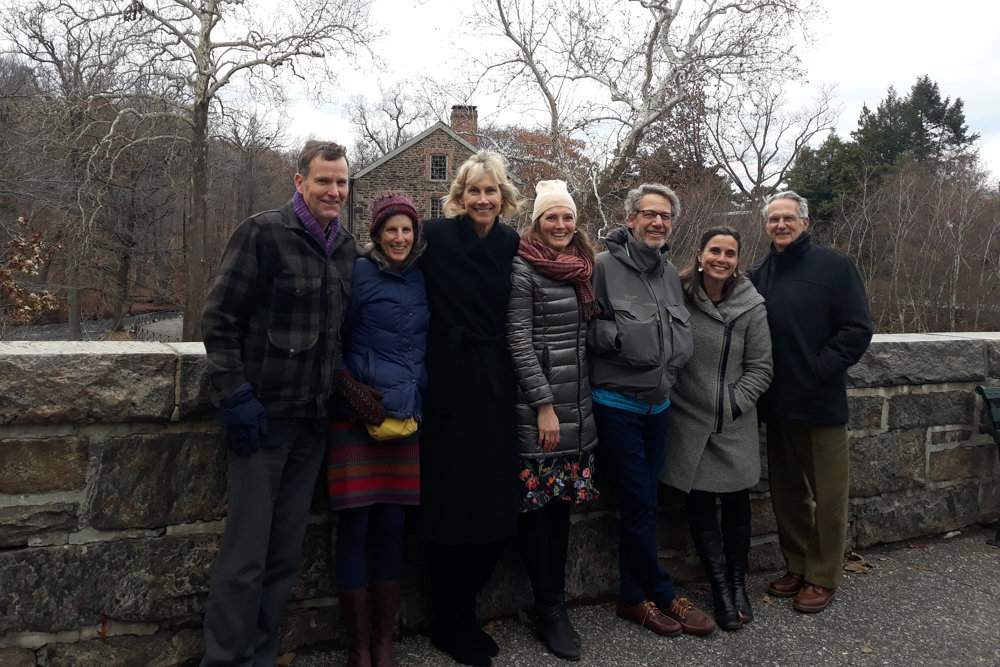Gardens across country suffering from invasive plant invasion
As I wrote previously, I attended an extraordinary symposium on sustainability last November at the New York Botanical Garden. It was called “Cultivating a New Garden Ethic,” and if I have piqued your curiosity sufficiently, it can be viewed in its entirety online at tinyurl.com/SustainNYBG.
Jan Merryweather of the California-based Sustainable Conservation was the first speaker who described how her organization has tackled the issue of invasives.
Her opening provocative question was, “Have you ever been taken in by deceptively beautiful invasive plants?” subtitled “Don’t get romanced by invasive plants.”
As an avid gardener, I am always interested in new plants. But the nursery trade, while catering to people such as myself, is the entry point for many invasives. In California, nurseries have introduced many invasives.
These plants can be divided into three categories — the recognized invasives, emerging invasives and those that are still, unfortunately, unrecognized.
Understanding these categories clarifies the typical S-shaped invasion curve linking infested area and cost of control over time. Simply put, the curve demonstrates three points: Enormous invasion to the point that only local control is possible, a midpoint where emerging invasives can be recognized, and then the start of the curve which represents new introductions and, therefore, the best point to prevent future problems.
Nurseries are introducing more than 1,000 new plants every year. In fact, they have already introduced more than 50,000 ornamentals to North America, and the number of cultivars introduced has skyrocketed from 29,000 in 1987 to 105,000 just a decade ago.
However, nurseries, like all businesses, respond to consumer demand. And while less than 1 percent of newly introduced plants will pose a future problem, those traits demanded by the public are pushing the problem.
Traits desired by customers include ease of growth, rapid spread, long bloom cycle, and adaptability to a variety of soil and climates.
Can you guess the traits likely to lead to invasion? “It is so difficult to distinguish between the beautiful and the terribly beautiful.”
Initially, Sustainable Conservation worked with commercial agriculture and various industries to find common ground to produce environmentally friendly practices. Merryweather mentioned parenthetically that manufacturers of brake pads were phasing out the copper content of their pads, which seemed an unlikely consequence of their work. Apparently, copper had been used for years to dissipate heat resulting in large amounts of copper dust accumulating in the environment. That dust is particularly bad when it ends up polluting water and harming aquatic life.
New non-toxic materials have replaced copper, and now most brake pads in the United States are either low-copper or copper-free. This sensitivity to the environment is also leading to the phasing out of other toxic materials such as antimony and cadmium.
In 2005, the Nature Conservancy of California approached Sustainable Conservation with a related problem. The conservancy was buying up land in order to preserve biodiversity. However, much of this land was already overrun by invasives, many of which were still being sold through the horticultural trade.
This led to the formation of PlantRight, an organization devoted to raising awareness in the horticultural trade, with the home gardener, and with the landscape professional on how they can play a part in a healthy environment.
The core of the program is the plant list developed to identify those plants which are pernicious in each of California’s different ecological zones. It then lists similar but non-invasive alternatives.
The list is relatively short because it focuses only on plants that can be readily bought at garden centers.
The plant list, in turn, is developed through the nursery survey and the plant risk evaluator, the latter being a checklist developed to track potential invasiveness of newly introduced ornamentals. To be added to the plant list, the plant must already be showing significant invasiveness or be considered high risk based on the risk assessment, and be available in more than 3 percent of local garden centers.
All decisions are subject to scientific review. Plants are removed from the list if it is no longer being sold at 1 percent or less of nurseries for three consecutive years.
The nursery survey is a volunteer project run through the statewide master gardener program, plant societies, forest service and the Association of Professional Landscape Designers to check plants for sale throughout the state.
The plant risk evaluator is intended to help the horticultural trade better decide which new plants could pose a risk before they are grown extensively for sale.
PlantRight does not exist in New York. So how can we utilize these insights? New York does have the Partnership for Regional Invasive Species Management, otherwise known as PRISM, with Riverdale part of the Lower Hudson region. We can check plants on their site at LHPRISM.org for local invasiveness, and we can spread the word that everyone can do their part.
Have a thought or comment for Sura Jeselsohn? Email her at greenscenesura@gmail.com.






